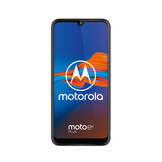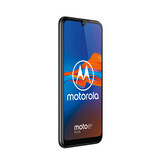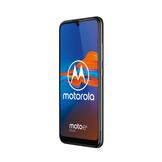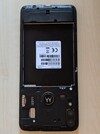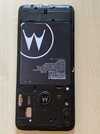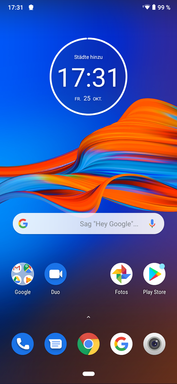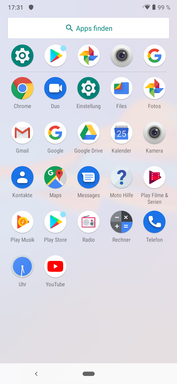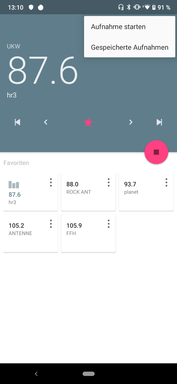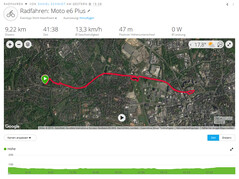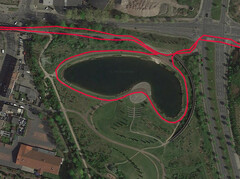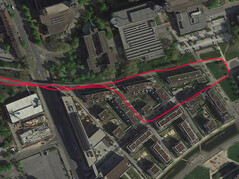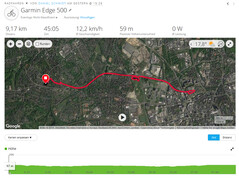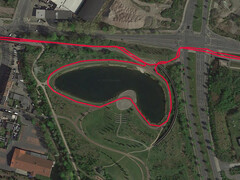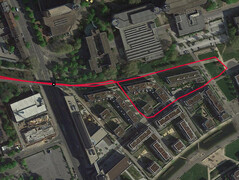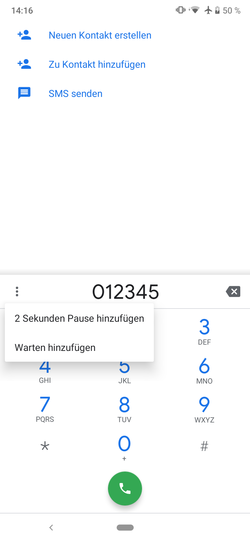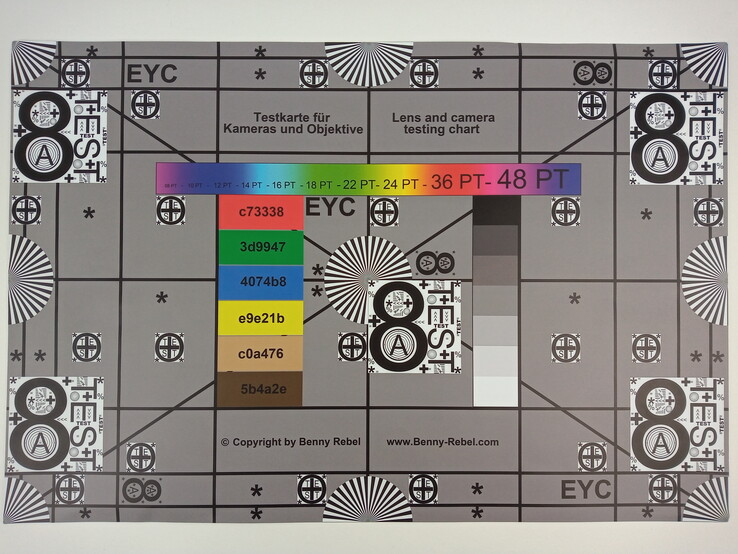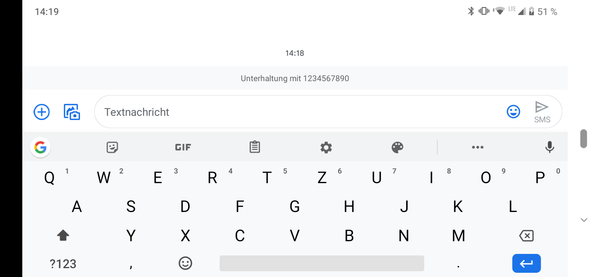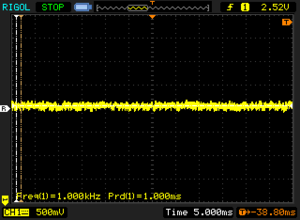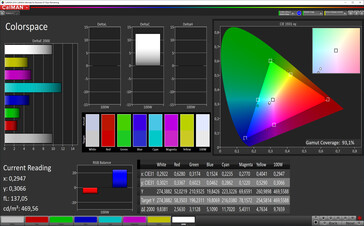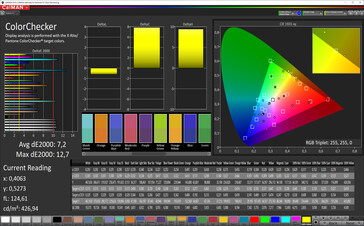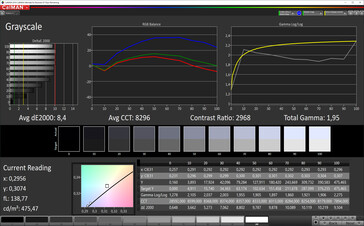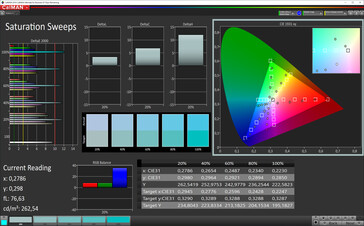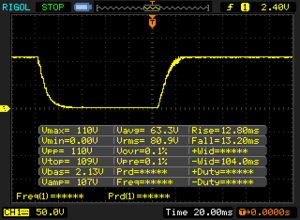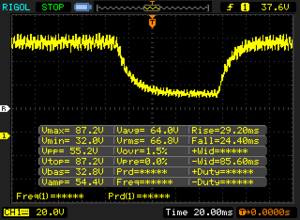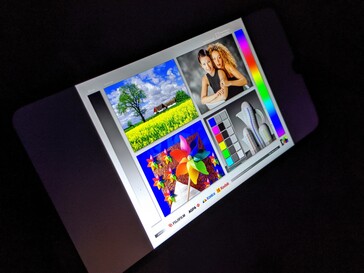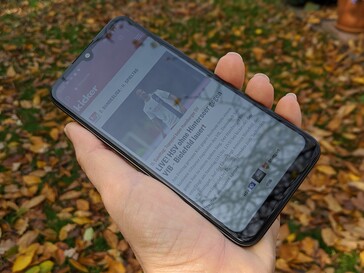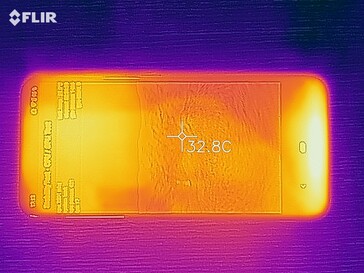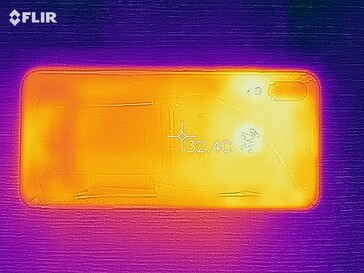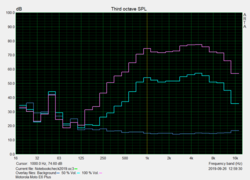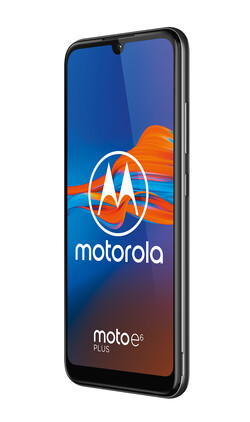Motorola Moto E6 Plus Smartphone Review: The battery rocks, but the performance sucks
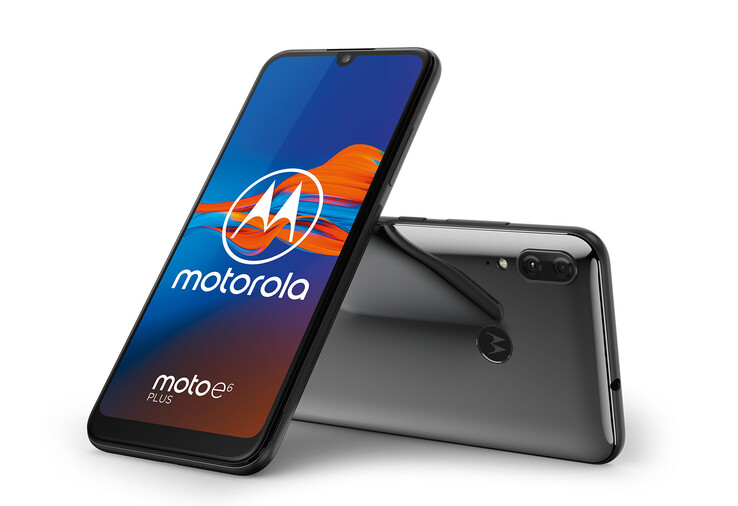
The Moto E6 Plus has become a bit more compact than its predecessor. However, that comes with a compromise, namely battery capacity. The E5 Plus had the space to accommodate a 5,000 mAh battery, whereas the E6 Plus only has a 3,000 mAh cell instead. Motorola has returned to MediaTek for this generation too, having switched from the former to Qualcomm for the E5 Plus.
We shall also compare the E6 Plus against the LG K40, Sony Xperia L3 and TP-Link Neffos X20, but you can add other smartphones to our comparison tables too. All four come with the same Helio P22 MT6762 SoC, so we will include the Xiaomi Mi A3 among our comparison devices too for a non-MediaTek offering. The Xiaomi Mi A3 features the more powerful Qualcomm Snapdragon 665 while hardly being any more expensive than the E6 Plus, for reference.
Devices overview
Rating | Date | Model | Weight | Drive | Size | Resolution | Price |
|---|---|---|---|---|---|---|---|
| 74.9 % v7 (old) | 11 / 2019 | Motorola Moto E6 Plus Helio P22 MT6762, PowerVR GE8320 | 149.7 g | 32 GB eMMC Flash | 6.10" | 1560x720 | |
| 78.6 % v6 (old) | 11 / 2018 | Motorola Moto E5 Plus 425, Adreno 308 | 197 g | 32 GB eMMC Flash | 6.00" | 1440x720 | |
v (old) | 08 / 2019 | Motorola Moto E6 435, Adreno 505 | 159 g | 16 GB eMMC Flash | 5.50" | 1440x720 | |
| 81.7 % v6 (old) | 06 / 2019 | LG K40 Helio P22 MT6762, PowerVR GE8320 | 145 g | 32 GB eMMC Flash | 5.70" | 1440x720 | |
| 82.5 % v6 (old) | 04 / 2019 | Sony Xperia L3 Helio P22 MT6762, PowerVR GE8320 | 156 g | 32 GB eMMC Flash | 5.70" | 1440x720 | |
| 73.8 % v7 (old) | 10 / 2019 | TP-Link Neffos X20 Helio A22 MT6761, PowerVR GE8300 | 171 g | 32 GB eMMC Flash | 6.26" | 1520x720 | |
| 78.4 % v7 (old) | 09 / 2019 | Xiaomi Mi A3 SD 665, Adreno 610 | 173.8 g | 64 GB UFS 2.1 Flash | 6.09" | 1560x720 |
Case - plastic but with a metal look to it
One can see that the E6 Plus is a mid-range smartphone, but it does not look cheap by any means. Motorola has concealed that it has used plastic by giving the E6 Plus a glossy back panel, which comes in Polished Graphite or Bright Cherry. Our review unit is well-built, and its craftsmanship is to a reasonable level.
The power and volume buttons both sit on the right-hand side of the device, with the headphone jack adorning its top side. Meanwhile, the sole speaker and microphone flank the micro USB on the bottom edge of the handset. The E6 Plus has relatively narrow display bezels and a waterdrop notch befitting more expensive devices. Its chin looks comparatively big next to the side and top bezels, though.
The E6 Plus is also IP52-certified, meaning that dust should not damage it internally, although there is no guarantee that dust cannot get inside. Dripping water should not affect the device either, so you should have no issues from using the device in the rain, for example.
Connectivity - A replaceable battery and three card slots
Having a replaceable battery is hardly a requirement these days, but it remains a plus in our eyes. The microSD, nano and micro-SIM card slots sit under the removable plastic cover too, alongside the battery. Motorola includes a micro to nano-SIM adapter in the box should you only have nano SIMs to hand.
The Helio P22 MT6762 integrates not only a PowerVR GE8320 GPU but also an FM transmitter. The E6 Plus has a micro USB port, along with Bluetooth 4.2 connectivity. Motorola has not included an NFC chip, but that is not unusual for a device at this price. The E6 Plus comes with 2 GB of RAM and 32 GB of storage or 4 GB and 64 GB for an additional 20 Euros (~$22).
Software - Waiting for Android 10
Our review unit arrived running Android 9.0 Pie and remained on the August 5 set of security updates. Beyond the standard suite of Google apps, Motorola includes a device-troubleshooting app and an FM radio app. No bloatware here, folks, but no Android 10 either.
Communication & GPS - weak Wi-Fi
The E6 Plus supports comparatively few LTE bands. It covers the important ones within Europe, though.
Moreover, our review unit has weak Wi-Fi performance and is only marginally better than the E5 Plus. The E6 Plus averaged just 46.6 Mb/s in our upload tests with our Linksys EA 8500 reference router, making it faster than only the LG K40 and the E5 Plus of our comparison devices. Its download speeds beat just the E5 Plus, though. Worse still, Wi-Fi reception in our review unit dropped at distances when other devices retained full signal.
| Networking | |
| iperf3 transmit AX12 | |
| TP-Link Neffos X20 | |
| Xiaomi Mi A3 | |
| Sony Xperia L3 | |
| Motorola Moto E6 Plus | |
| LG K40 | |
| Motorola Moto E5 Plus | |
| iperf3 receive AX12 | |
| TP-Link Neffos X20 | |
| LG K40 | |
| Xiaomi Mi A3 | |
| Sony Xperia L3 | |
| Motorola Moto E6 Plus | |
| Motorola Moto E5 Plus | |
The E6 Plus officially supports Galileo, GPS and GLONASS but the GPS Test app claims that it supports BeiDou too. Our review unit achieves a satellite fix with up to two metres accuracy outdoors, which dropped to six metres when we took the device inside and placed it next to a window. Its accuracy reduced to seven metres when we moved it away from a window, though.
We also took the device on a bike ride to compare its location accuracy against a Garmin Edge 500, our reference bike computer. Despite some inaccuracies, the E6 Plus proved to be a useful navigation device.
Telephone Features & Call Quality
The E6 Plus transmits our voice well, but people on the other end of the line sound unclear. Switching to hands-free noticeably improves call quality, while the mono speaker even gets loud enough to make calls while cycling.
Motorola claims that the E6 Plus has two microphones. We can only spot one, but the other could be hidden behind the speaker grille. Putting one there would not make much sense though as it would be on the same side as the other microphone.
Cameras - Good for its class
The E6 Plus has comparatively good cameras, especially for its price. Motorola has equipped the device with an 8 MP front-facing sensor, a 13 MP rear-facing camera and a 2 MP secondary sensor that can provide the primary camera with additional depth of field information. The latter helps the device take decent portrait shots, while landscapes can be augmented with depth effects. These, like selfies, do not always come out cleanly, though.
While the E6 Plus cannot compete with the cameras of flagship smartphones like the Huawei P30 Pro and Samsung Galaxy Fold or a professional camera, it generally does a good job. Low-light images are practically useless unless you enable the LED flash though, as scene 3 below demonstrates.
The E6 Plus did a surprisingly good job at reproducing ColorChecker Passport reference colours under controlled lighting conditions. Our test chart shows that the primary rear-facing camera tends to overexpose natural tones, though.
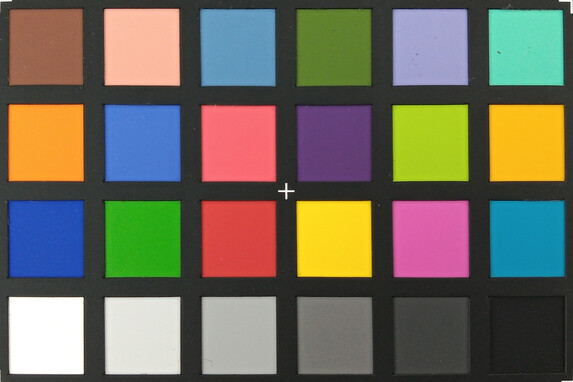
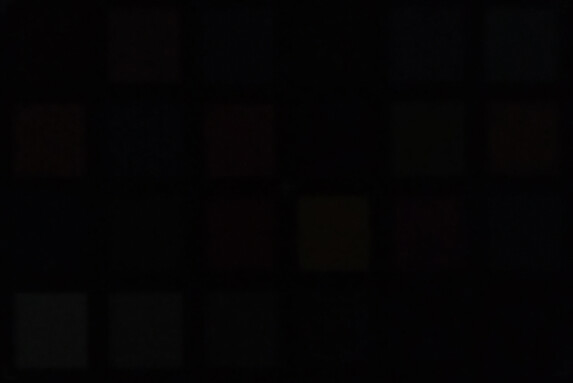
Accessories & Warranty
Motorola includes not only a charger and a corresponding USB cable in the box but also a protective cover and headphones in some countries. Our review unit arrived with the latter two, for reference. As we mentioned earlier, Motorola included a micro SIM card adapter too.
The E6 Plus comes with 24 months' warranty. However, Motorola affords 12 months' warranty for the charger, USB cable and battery. Please see our Guarantees, Return Policies and Warranties FAQ for country-specific information.
Input Devices & Operation
Motorola preinstalls Google GBoard as the default keyboard on the E6 Plus. The device supports face recognition using its front-facing camera and has a fingerprint scanner for biometric authentication. Both worked well during our tests.
Display - An excellent contrast ratio, but too cool for our liking
The E6 Plus has a larger display than its predecessor, despite its smaller dimensions. Its aspect ratio has also changed from 2:1 to 19.5:9, but it remains a 720p panel. Videos now play without being flanked by black bars, which is a nice change from the E5 Plus. The E6 Plus only supports DRM Widevine Level 3, so it cannot stream DRM-protected content from the likes of Amazon Prime and Netflix in HD.
Disappointingly, the E6 Plus has a dimmer display than its predecessor. Its average peak luminosity is around 9% lower than that of the E5 Plus, while it is only brighter than the Xiaomi Mi A3 of our comparison devices. However, it has a substantially lower black level, which allows the E6 Plus to achieve an excellent 3,236:1 contrast ratio. While this value is higher than the contrast ratios of all our comparison devices, the Sony Xperia L3 offers the best balance between brightness, contrast and colour accuracy.
| |||||||||||||||||||||||||
Brightness Distribution: 86 %
Center on Battery: 453 cd/m²
Contrast: 3236:1 (Black: 0.14 cd/m²)
ΔE ColorChecker Calman: 7.2 | ∀{0.5-29.43 Ø4.78}
ΔE Greyscale Calman: 8.4 | ∀{0.09-98 Ø5}
93.1% sRGB (Calman 2D)
Gamma: 1.95
CCT: 8296 K
| Motorola Moto E6 Plus IPS, 1560x720, 6.1" | Motorola Moto E5 Plus IPS, 1440x720, 6" | LG K40 IPS, 1440x720, 5.7" | Sony Xperia L3 IPS, 1440x720, 5.7" | TP-Link Neffos X20 IPS, 1520x720, 6.3" | Xiaomi Mi A3 AMOLED, 1560x720, 6.1" | |
|---|---|---|---|---|---|---|
| Screen | -57% | -18% | 16% | -23% | 3% | |
| Brightness middle (cd/m²) | 453 | 518 14% | 475 5% | 533 18% | 470 4% | 348 -23% |
| Brightness (cd/m²) | 440 | 481 9% | 467 6% | 533 21% | 455 3% | 355 -19% |
| Brightness Distribution (%) | 86 | 87 1% | 90 5% | 89 3% | 93 8% | 91 6% |
| Black Level * (cd/m²) | 0.14 | 0.85 -507% | 0.32 -129% | 0.25 -79% | 0.41 -193% | |
| Contrast (:1) | 3236 | 609 -81% | 1484 -54% | 2132 -34% | 1146 -65% | |
| Colorchecker dE 2000 * | 7.2 | 4.47 38% | 5.95 17% | 2.8 61% | 6 17% | 5.86 19% |
| Colorchecker dE 2000 max. * | 12.7 | 8.04 37% | 12.62 1% | 5.1 60% | 10.1 20% | 15.6 -23% |
| Greyscale dE 2000 * | 8.4 | 5.4 36% | 7.9 6% | 1.9 77% | 6.3 25% | 3.6 57% |
| Gamma | 1.95 113% | 2.318 95% | 2.331 94% | 2.11 104% | 2.06 107% | 2.232 99% |
| CCT | 8296 78% | 7134 91% | 8202 79% | 6149 106% | 8064 81% | 7051 92% |
* ... smaller is better
Screen Flickering / PWM (Pulse-Width Modulation)
| Screen flickering / PWM not detected | |||
In comparison: 53 % of all tested devices do not use PWM to dim the display. If PWM was detected, an average of 8111 (minimum: 5 - maximum: 343500) Hz was measured. | |||
One area that the E6 Plus struggles in is colour accuracy. Our spectrophotometer and CalMAN analysis software demonstrate that our review unit has comparatively high colour deviations. Its ColorChecker variation of 7.2 is particularly troublesome, as it yields a colour temperature of 8,300 K that makes the display look overly cool.
Motorola includes a blue-light filter within the system settings, which can combat against the excessive blue tones that the display produces. Its intensity can be adjusted too.
Display Response Times
| ↔ Response Time Black to White | ||
|---|---|---|
| 26 ms ... rise ↗ and fall ↘ combined | ↗ 12.8 ms rise | |
| ↘ 13.2 ms fall | ||
| The screen shows relatively slow response rates in our tests and may be too slow for gamers. In comparison, all tested devices range from 0.1 (minimum) to 240 (maximum) ms. » 61 % of all devices are better. This means that the measured response time is worse than the average of all tested devices (20.2 ms). | ||
| ↔ Response Time 50% Grey to 80% Grey | ||
| 53.6 ms ... rise ↗ and fall ↘ combined | ↗ 29.2 ms rise | |
| ↘ 24.4 ms fall | ||
| The screen shows slow response rates in our tests and will be unsatisfactory for gamers. In comparison, all tested devices range from 0.165 (minimum) to 636 (maximum) ms. » 90 % of all devices are better. This means that the measured response time is worse than the average of all tested devices (31.6 ms). | ||
The display has a glossy finish, so you must put up with reflections when using the device under bright lights or on a sunny day. However, we encountered no readability issues when using the device outside in October, nor did we notice any brightness or colour distortions at acute viewing angles.
Performance - In a word: weak
MediaTek released the Helio P22 MT6762 last year, so it has already appeared several times in our offices. The SoC integrates eight ARM Cortex-A53 cores on a big.LITTLE architecture, along with a PowerVR GE8320 GPU among other components.
Our benchmark results generally represent the relative performance of the SoCs in our comparison devices. The Xiaomi Mi A3 and its Snapdragon 665 regularly take first place, for instance, while Helio P22 MT6762-powered devices occupy the midfield. Meanwhile, the E5 Plus and the Snapdragon 425 fall to the bottom of the pack.
In practice, the E6 Plus often feels sluggish, especially when scrolling or switching between apps.
| PCMark for Android | |
| Work performance score (sort by value) | |
| Motorola Moto E6 Plus | |
| Motorola Moto E5 Plus | |
| LG K40 | |
| Sony Xperia L3 | |
| Xiaomi Mi A3 | |
| Average Mediatek Helio P22 MT6762 (4404 - 7465, n=18) | |
| Work 2.0 performance score (sort by value) | |
| Motorola Moto E6 Plus | |
| Motorola Moto E5 Plus | |
| LG K40 | |
| Sony Xperia L3 | |
| TP-Link Neffos X20 | |
| Xiaomi Mi A3 | |
| Average Mediatek Helio P22 MT6762 (3805 - 5380, n=21) | |
| GFXBench 3.1 | |
| on screen Manhattan ES 3.1 Onscreen (sort by value) | |
| Motorola Moto E6 Plus | |
| LG K40 | |
| Sony Xperia L3 | |
| TP-Link Neffos X20 | |
| Xiaomi Mi A3 | |
| Average Mediatek Helio P22 MT6762 (10 - 11, n=9) | |
| Average of class Smartphone (11 - 166, n=157, last 2 years) | |
| 1920x1080 Manhattan ES 3.1 Offscreen (sort by value) | |
| Motorola Moto E6 Plus | |
| LG K40 | |
| Sony Xperia L3 | |
| TP-Link Neffos X20 | |
| Xiaomi Mi A3 | |
| Average Mediatek Helio P22 MT6762 (3.7 - 6.2, n=9) | |
| Average of class Smartphone (8.4 - 413, n=157, last 2 years) | |
| AnTuTu v7 - Total Score (sort by value) | |
| Motorola Moto E6 Plus | |
| Motorola Moto E5 Plus | |
| LG K40 | |
| Sony Xperia L3 | |
| Xiaomi Mi A3 | |
| Average Mediatek Helio P22 MT6762 (71347 - 88242, n=9) | |
Even long webpages do not run smoothly, while we occasionally had to wait for images to load. Our browser benchmark comparison tables also reflect our CPU benchmark results. While the E6 Plus cannot match the Xiaomi Mi A3 here, it fares much better than the E5 Plus does.
| Jetstream 2 - 2.0 Total Score | |
| Average of class Smartphone (23.8 - 387, n=152, last 2 years) | |
| Xiaomi Mi A3 (Chrome 76) | |
| Motorola Moto E6 Plus (Chrome 77) | |
| Sony Xperia L3 (Chrome 72) | |
| Average Mediatek Helio P22 MT6762 (12.9 - 13.9, n=3) | |
| WebXPRT 3 - Overall | |
| Average of class Smartphone (38 - 380, n=34, last 2 years) | |
| Xiaomi Mi A3 (Chrome 76) | |
| Sony Xperia L3 (Chrome 72) | |
| LG K40 (Chrome 74) | |
| Average Mediatek Helio P22 MT6762 (26 - 30, n=7) | |
| Motorola Moto E6 Plus (Chrome 77) | |
| Octane V2 - Total Score | |
| Average of class Smartphone (2228 - 121337, n=199, last 2 years) | |
| Xiaomi Mi A3 (Chrome 76) | |
| Sony Xperia L3 (Chrome 72) | |
| LG K40 (Chrome 74) | |
| Average Mediatek Helio P22 MT6762 (3312 - 4508, n=9) | |
| Motorola Moto E6 Plus (Chrome 77) | |
| Motorola Moto E5 Plus (Chrome 70) | |
| Mozilla Kraken 1.1 - Total | |
| Motorola Moto E5 Plus (Chrome 70) | |
| LG K40 (Chrome 74) | |
| Average Mediatek Helio P22 MT6762 (10846 - 12799, n=9) | |
| Motorola Moto E6 Plus (Chrome 77) | |
| Sony Xperia L3 (Chrome 72) | |
| Xiaomi Mi A3 (Chrome 76) | |
| Average of class Smartphone (257 - 28190, n=154, last 2 years) | |
* ... smaller is better
The E6 Plus supports up to 512-GB microSD cards, which is handy if you need more storage. The device can format microSD cards as internal storage too, but it does not support exFAT. Incidentally, the default camera app allows you to save photos to either the internal storage or a microSD card.
While our review unit and all but the Xiaomi Mi A3 of our comparison devices have fast microSD card readers, only the Xiaomi shone in AndroBench's internal storage benchmarks. By contrast, the E6 Plus and our other comparison devices achieved only just about passable transfer speeds.
| Motorola Moto E6 Plus | Motorola Moto E5 Plus | LG K40 | Sony Xperia L3 | TP-Link Neffos X20 | Xiaomi Mi A3 | Average 32 GB eMMC Flash | Average of class Smartphone | |
|---|---|---|---|---|---|---|---|---|
| AndroBench 3-5 | 40% | -14% | -13% | -17% | 133% | -8% | 1128% | |
| Sequential Read 256KB (MB/s) | 277.7 | 248.5 -11% | 261.7 -6% | 290.9 5% | 279 0% | 502 81% | 242 ? -13% | 2213 ? 697% |
| Sequential Write 256KB (MB/s) | 106.1 | 137.9 30% | 100.5 -5% | 87.5 -18% | 90.6 -15% | 184 73% | 100.5 ? -5% | 1831 ? 1626% |
| Random Read 4KB (MB/s) | 61.7 | 62.7 2% | 52.6 -15% | 28.83 -53% | 39.39 -36% | 126.9 106% | 43.1 ? -30% | 294 ? 376% |
| Random Write 4KB (MB/s) | 17.41 | 56.1 222% | 10 -43% | 16.36 -6% | 8.65 -50% | 117.4 574% | 22.3 ? 28% | 333 ? 1813% |
| Sequential Read 256KB SDCard (MB/s) | 82.5 ? | 83.9 ? 2% | 77.6 ? -6% | 80.9 ? -2% | 82.6 ? 0% | 67.8 ? -18% | 71.8 ? -13% | |
| Sequential Write 256KB SDCard (MB/s) | 62.3 ? | 60.7 ? -3% | 57.4 ? -8% | 61.7 ? -1% | 63 ? 1% | 50.1 ? -20% | 52.9 ? -15% |
Games - At a low level
The PowerVR GE8320 can clock at up to 650 MHz and is only powerful enough for some light gaming. Even graphically undemanding games like Badminton League and Super Mario Run push the GPU to its limits, so do not expect complex titles to run well if at all.
The E6 Plus does not support the Vulkan API, for reference. Its touchscreen and sensors worked well during our gaming tests, which we verified by playing Temple Run. However, the lack of sensors proved to be a limiting factor. Harry Potter Wizards Unite, for example, would not install as it requires a compass and gyroscope, neither of which the E6 Plus has. Moreover, Pokémon Go stops long before we reach the end of the 2,500 entries in the Pokédex. The 4 GB variant of the E6 Plus may have no issue with this, though.
Emissions - Low thermals & a mono speaker
Temperature
The E6 Plus hardly heats up even under sustained load. Our review unit reached 35.1 °C at its warmest point during our tests, which is not overly warm. In short, the E6 Plus should never feel too hot to hold, even during prolonged gaming sessions.
(+) The maximum temperature on the upper side is 35.1 °C / 95 F, compared to the average of 35.2 °C / 95 F, ranging from 21.9 to 247 °C for the class Smartphone.
(+) The bottom heats up to a maximum of 30.8 °C / 87 F, compared to the average of 34 °C / 93 F
(+) In idle usage, the average temperature for the upper side is 31.8 °C / 89 F, compared to the device average of 32.9 °C / 91 F.
Speakers
The mono speaker on the E6 Plus gets surprisingly loud and sounds better than the one in its predecessor. Overall, audio sounds more pleasant coming from the speaker in the E6 Plus than it does from the one in the E5 Plus, despite both struggling to reproduce bass frequencies.
We encountered no issues when using headphones, regardless of whether we connected them via the 3.5 mm jack or Bluetooth.
Motorola has also included an option called BesLoudness, rather than individual audio enhancements. The setting reinforces any sound that is playing, but it failed to convince us during our tests. Rock songs, for example, often sounded overblown with this setting enabled.
Motorola Moto E6 Plus audio analysis
(+) | speakers can play relatively loud (85.9 dB)
Bass 100 - 315 Hz
(-) | nearly no bass - on average 37.1% lower than median
(±) | linearity of bass is average (10.7% delta to prev. frequency)
Mids 400 - 2000 Hz
(±) | reduced mids - on average 5.3% lower than median
(+) | mids are linear (6.2% delta to prev. frequency)
Highs 2 - 16 kHz
(+) | balanced highs - only 4.1% away from median
(+) | highs are linear (2.8% delta to prev. frequency)
Overall 100 - 16.000 Hz
(±) | linearity of overall sound is average (24.1% difference to median)
Compared to same class
» 55% of all tested devices in this class were better, 8% similar, 37% worse
» The best had a delta of 11%, average was 35%, worst was 134%
Compared to all devices tested
» 72% of all tested devices were better, 6% similar, 22% worse
» The best had a delta of 4%, average was 24%, worst was 134%
Motorola Moto E5 Plus audio analysis
(±) | speaker loudness is average but good (76 dB)
Bass 100 - 315 Hz
(-) | nearly no bass - on average 28.6% lower than median
(±) | linearity of bass is average (7.6% delta to prev. frequency)
Mids 400 - 2000 Hz
(±) | higher mids - on average 7.1% higher than median
(±) | linearity of mids is average (8.6% delta to prev. frequency)
Highs 2 - 16 kHz
(±) | higher highs - on average 5.9% higher than median
(±) | linearity of highs is average (7.8% delta to prev. frequency)
Overall 100 - 16.000 Hz
(-) | overall sound is not linear (32.7% difference to median)
Compared to same class
» 83% of all tested devices in this class were better, 2% similar, 16% worse
» The best had a delta of 11%, average was 35%, worst was 134%
Compared to all devices tested
» 91% of all tested devices were better, 1% similar, 7% worse
» The best had a delta of 4%, average was 24%, worst was 134%
LG K40 audio analysis
(±) | speaker loudness is average but good (81.8 dB)
Bass 100 - 315 Hz
(-) | nearly no bass - on average 63.5% lower than median
(+) | bass is linear (0% delta to prev. frequency)
Mids 400 - 2000 Hz
(-) | nearly no mids - on average 63.5% lower than median
(+) | mids are linear (0% delta to prev. frequency)
Highs 2 - 16 kHz
(-) | nearly no highs - on average 63.5% lower than median
(+) | highs are linear (0% delta to prev. frequency)
Overall 100 - 16.000 Hz
(-) | overall sound is not linear (125.6% difference to median)
Compared to same class
» 96% of all tested devices in this class were better, 4% similar, 1% worse
» The best had a delta of 11%, average was 35%, worst was 134%
Compared to all devices tested
» 99% of all tested devices were better, 1% similar, 0% worse
» The best had a delta of 4%, average was 24%, worst was 134%
Power Management - A 3,000 mAh battery with decent runtimes
Power Consumption
The power consumption of the E6 Plus is as comparatively low when idling as it is under load. While the Sony Xperia L3 and TP-Link Neffos X20 are slightly more efficient than our review unit, it consumes less than our other comparison devices.
| Off / Standby | |
| Idle | |
| Load |
|
Key:
min: | |
| Motorola Moto E6 Plus 3000 mAh | Motorola Moto E5 Plus 5000 mAh | LG K40 3000 mAh | Sony Xperia L3 3300 mAh | TP-Link Neffos X20 4100 mAh | Xiaomi Mi A3 4030 mAh | Average Mediatek Helio P22 MT6762 | Average of class Smartphone | |
|---|---|---|---|---|---|---|---|---|
| Power Consumption | -14% | -8% | 7% | 14% | -49% | -1% | -59% | |
| Idle Minimum * (Watt) | 0.57 | 0.9 -58% | 0.68 -19% | 0.57 -0% | 0.57 -0% | 0.8 -40% | 0.669 ? -17% | 0.848 ? -49% |
| Idle Average * (Watt) | 1.69 | 1.5 11% | 1.53 9% | 1.5 11% | 1.52 10% | 2 -18% | 1.577 ? 7% | 1.434 ? 15% |
| Idle Maximum * (Watt) | 1.72 | 2 -16% | 1.95 -13% | 1.51 12% | 1.66 3% | 3.3 -92% | 1.851 ? -8% | 1.618 ? 6% |
| Load Average * (Watt) | 3 | 3.2 -7% | 3.5 -17% | 3.09 -3% | 2.34 22% | 4.1 -37% | 2.91 ? 3% | 7.01 ? -134% |
| Load Maximum * (Watt) | 4.88 | 4.9 -0% | 4.9 -0% | 4.15 15% | 3.16 35% | 7.7 -58% | 4.41 ? 10% | 11.3 ? -132% |
* ... smaller is better
Battery Life
Motorola equips the E6 Plus with a 3,000 mAh battery. As we mentioned at the start of the review, the device has a 2,000-mAh smaller capacity than its predecessor, but it still fared well in our practical Wi-Fi battery life test. While the E6 Plus cannot match its predecessor's runtime of 17:58 hours, it lasted a respectable 13:45 hours. Only the Xiaomi Mi A3 lasted longer than the E6 Plus of our other comparison devices, despite the Sony Xperia L3 and TP-Link Neffos X20 having larger batteries than our review unit.
| Motorola Moto E6 Plus 3000 mAh | Motorola Moto E5 Plus 5000 mAh | LG K40 3000 mAh | Sony Xperia L3 3300 mAh | TP-Link Neffos X20 4100 mAh | Xiaomi Mi A3 4030 mAh | |
|---|---|---|---|---|---|---|
| Battery runtime | 30% | -10% | -22% | -19% | 19% | |
| WiFi v1.3 (h) | 13.8 | 18 30% | 12.4 -10% | 10.7 -22% | 11.2 -19% | 16.4 19% |
| Reader / Idle (h) | 35.5 | 28.7 | ||||
| H.264 (h) | 12.5 | 17.1 | ||||
| Load (h) | 4 | 5 |
Pros
Cons
Verdict
While the Motorola Moto E6 Plus has a decent display and battery life, its performance leaves a lot to be desired. The latter is a problem for all but one of our comparison devices too, though.
The E6 Plus is a mixed upgrade over its predecessor too. While, black bars no longer letterbox videos as they do on the E5 Plus, Motorola has equipped the E6 Plus with a substantially smaller battery. Our review unit still held up well in our battery life tests though, even if it could not match the longevity of the E5 Plus or Xiaomi Mi A3.
The Motorola Moto E6 Plus has many positives, but its performance is too weak for us to be able to recommend it in good conscience.
The additional 2 GB of RAM that the 4 GB variant offers may resolve some of the issues that affected our review unit. However, it will not make the MediaTek Helio P22 MT6762 any more powerful, so we would recommend taking a look at the Xiaomi Mi A3 instead if you are interested in an affordable mid-range handset.
Motorola Moto E6 Plus
- 10/30/2019 v7 (old)
Inge Schwabe




